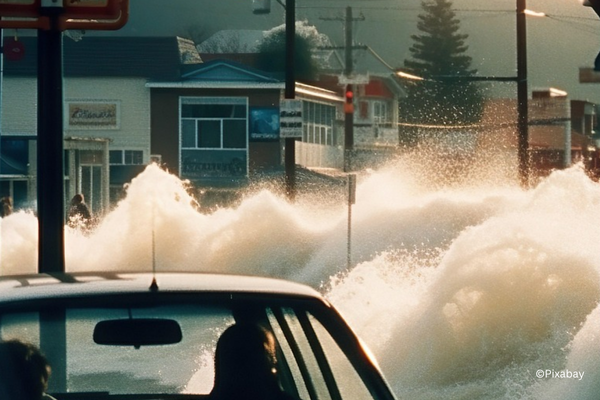In the morning of 30 July 2025, a seaquake occurred off the east coast of Russia, with its epicentre in the open sea around 130 km off the coast of Kamchatka. With a measured magnitude of 8.8, the quake was the strongest worldwide since the Fukushima disaster in March 2011, according to the US Geological Survey (USGS) [1,2,3]. The German Research Centre for Geosciences reported a magnitude of 7.8, while the Russian news agency Tass initially reported a magnitude of 7.9 and later revised it to 8.7 [1].
The quake shook Russia’s Kamchatka Peninsula and triggered a tsunami wave, prompting tsunami warnings for the Russian east coast, Japan, Hawaii, Alaska, the US west coast, Latin American countries, the Philippines and New Zealand, among others [1,2,3,4].
The earthquake caused particular damage to the region around Petropavlovsk-Kamchatsky, the capital of Kamchatka. Numerous buildings there have cracks, and there have been power outages and evacuations. In several settlements along the coast and on the Kuril Islands, people were urged to move to higher ground [4]. The Kuril Islands have so far been hit by several waves three to four metres high and one wave five metres high [3].
Waves of around one metre also hit Japan, for example. In the early afternoon (CEST), tsunami warnings were lifted or downgraded in many places. This was the case in Japan, the Philippines and Hawaii, for example [3].
[1] Russland: Schweres Erdbeben vor Halbinsel Kamtschatka – Tsunamiwarnung – DER SPIEGEL (accessed on 30.07.2025)
[2] Schweres Erdbeben vor Russlands Ostküste – Tsunami-Warnung für mehrere Länder – Panorama – SZ.de (accessed on 30.07.2025)
[3] Liveblog zu Beben und Tsunami: ++ Vorsichtige Entwarnung auf Hawaii ++ | tagesschau.de (accessed on 30.07.2025)
[4] Nach Erdbeben: Tsunami trifft russische Halbinsel Kamtschatka | tagesschau.de (accessed on 30.07.2025)
(Image source: Pixabay)


